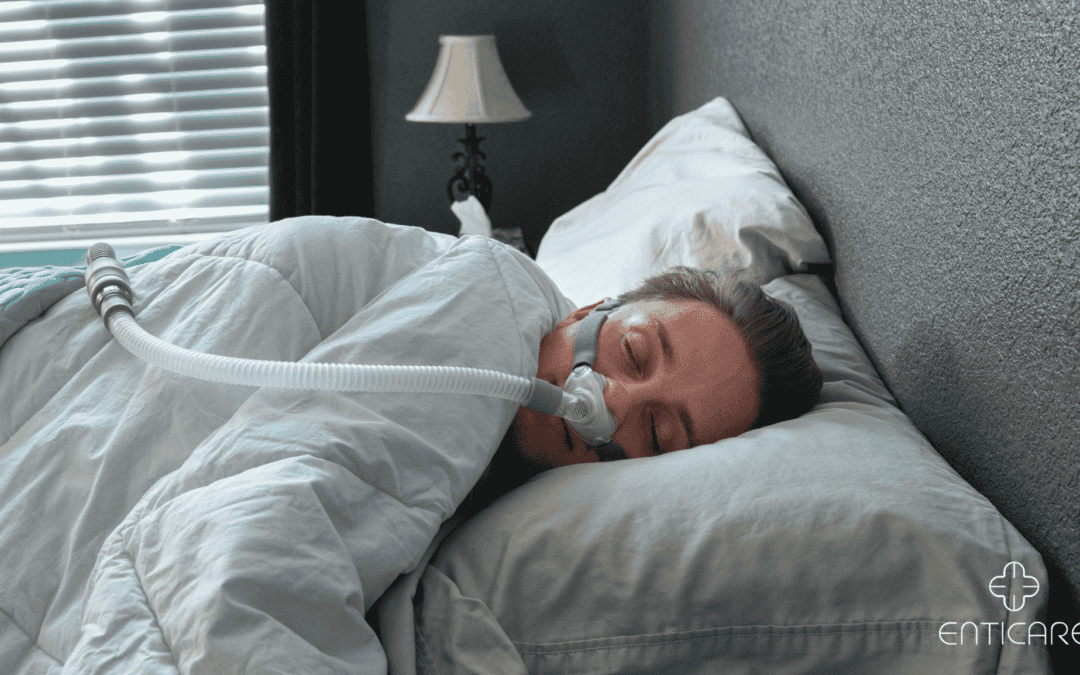Experiencing water in your CPAP tubing can disrupt your therapy and cause discomfort. Understanding the immediate steps to address this issue is crucial for maintaining your CPAP machine’s effectiveness and your overall comfort. This guide will walk you through what to do if you find water in your CPAP tubing. Advanced features of Air Solutions CPAP machines, such as automated adjustments for humidity and temperature, can help prevent these issues.
Understanding the Problem
What Causes Water to Accumulate in CPAP Tubing?
- Humidifier Settings: If your CPAP machine has a heated humidifier, setting it too high can lead to condensation, especially in colder environments. CPAP rainout occurs when warm, moist air cools down in the tubing, leading to condensation. The warm, moist air from the humidifier meets the cooler air outside the tubing, causing water droplets to form inside. Heated air cooling contributes to this condensation as the temperature difference between the heated air and the cooler environment leads to water accumulation.
- Temperature Fluctuations: Significant temperature changes in your bedroom or the surrounding environment can lead to condensation. If your room temperature is much lower than the temperature of the air inside the CPAP tubing, water can form.
- Tube Positioning: Incorrect positioning of the CPAP tubing can cause water to collect. If the tubing is hanging or coiled, it may trap water.
Why Is It Important to Address Water in CPAP Tubing?
- Discomfort: Water in the tubing can lead to discomfort during use, causing interruptions in sleep and affecting the overall efficacy of the CPAP therapy. Water can also accumulate in the CPAP mask, causing discomfort and requiring regular maintenance.
- Bacterial Growth: Stagnant water in the tubing creates a breeding ground for bacteria and mold, potentially leading to respiratory infections or other health issues.
- Device Damage: Prolonged exposure to water can damage the CPAP machine and its components, reducing its lifespan and effectiveness.
Immediate Steps to Take
Turn Off the CPAP Machine
Before handling the tubing, ensure that your CPAP machine is turned off and unplugged. This step prevents any risk of electrical shock and allows the machine to cool down.
Remove the Tubing
Carefully detach the tubing from the CPAP machine and mask. Avoid spilling any water that might be inside. If possible, do this in a sink or over a towel to contain any potential spills.
Drain and Dry the Tubing
- Drain the Water: Hold the tubing up and allow the water to drain out. You can gently shake the tubing to help remove any remaining water.
- Dry the Tubing: Lay the tubing flat on a towel or hang it up to air dry completely. Ensure that it is fully dry before reconnecting it to the CPAP machine.
- Check for Residual Water: Before reattaching the tubing, make sure it is completely dry. Any leftover moisture can affect the performance of your CPAP machine. Consider using a heated tube to maintain a consistent temperature and reduce condensation.
Preventing Future Issues
Adjust Humidifier Settings
- Lower the Humidifier Temperature: Reduce the temperature of your heated humidifier to minimize condensation. Maintaining the right humidity level is crucial for comfort and effectiveness in CPAP therapy. Start with a lower setting and gradually increase if needed. Lowering the humidity setting can help reduce condensation caused by warm, moist air hitting the cooler surfaces of the tubing.
- Use a Heated Tubing: Consider investing in heated tubing, which helps maintain a consistent temperature and reduces condensation.
- Monitor Humidity Levels: Keep track of the humidity levels in your room and adjust the settings on your CPAP machine accordingly.
Proper Heated Tubing Positioning
- Ensure Proper Positioning: Keep the tubing straight and avoid kinks or bends. Position it so that it does not hang or coil, which can trap water.
- Elevate the Tubing: If possible, elevate the tubing to prevent water from collecting in low areas.
- Use a CPAP Hose Holder: A CPAP hose holder can help keep the tubing properly positioned and reduce the risk of water accumulation.
Regular Maintenance and Cleaning
- Clean the Tubing Regularly: Follow the manufacturer’s recommendations for cleaning the CPAP tubing to prevent bacterial growth and other issues. Regular cleaning also helps prevent water accumulation in the CPAP hose.
- Inspect the Tubing: Regularly check the tubing for signs of wear or damage. Replace it if necessary.
- Schedule Routine Checkups: Have your CPAP machine and accessories checked regularly by a healthcare professional to ensure they are functioning correctly.
When to Seek Professional Help
Persistent Issues
If you continue to experience water in the tubing despite taking preventive measures, consult your healthcare provider or a CPAP specialist. Persistent issues may indicate a malfunctioning humidifier or other problems that require professional attention.
Health Concerns
If you notice any signs of respiratory infection or other health issues related to CPAP use, such as coughing, wheezing, or nasal congestion, seek medical advice promptly. Warm air from a user’s breath can cool upon contact with the CPAP tubing, leading to condensation.
Equipment Malfunctions
If your CPAP machine shows any signs of malfunction or damage due to water exposure, contact your equipment provider for repair or replacement options.
Conclusion
Addressing water in your CPAP tubing promptly ensures that your therapy remains effective and comfortable. By understanding the causes, taking immediate action, and implementing preventive measures, you can maintain the performance of your CPAP machine and safeguard your health.
For personalized advice and professional assistance, schedule an appointment with our specialists at Enticare. We’re here to help you with all your CPAP needs and ensure that you get the most out of your therapy.
Resources
- American Sleep Association: CPAP Therapy
- National Heart, Lung, and Blood Institute: CPAP Therapy
- Sleep Foundation: CPAP Machine Maintenance

